
Reconstruction at Flamingo moves slowly
FLAMINGO, Fla. – After driving over 20 miles the final destination was a desolate ghost town that stretched on for what seemed like forever.
The construction equipment and looming grey clouds from the morning rain seemed to be a reminiscent of the 2005 hurricane season that left this area in the eerie condition that it is in today.
Three major hurricanes hit South Florida in fall 2005, damaging many homes and buildings. However, this year’s mild season provided time for reconstruction. However, damage of other places that haven’t been restored take a back seat.
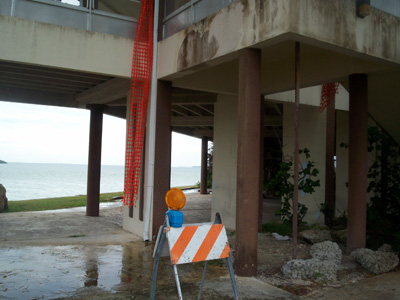 |
Repair work proceeds at the Flamingo Visitor Center (Photos by Allison Slutsky) |
Park officials are in the process of discussing renovation and rebuilding fans but no cost has been established to fix the damaged areas. Because the park is publicly owned they have been having public meetings on what should be fixed and rebuilt on the Flamingo property.
Nothing has been determined yet and park administrators are currently looking over suggestions from these meetings. Once something is decided another series of meetings will take place for the public but until then there is no tentative dates, plans or cost determined until the public helps decide what will happen.
Not only were buildings damaged but nature was too. Everglades National Park is still suffering from the damage that the 2005 hurricane season left behind and continues to display the damage to all its visitors.
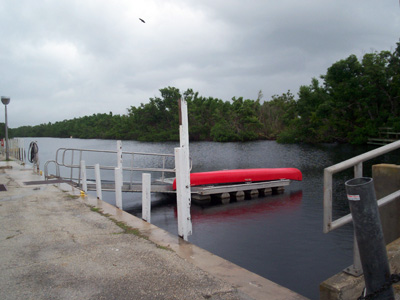 Although many areas throughout the Everglades faced minor damage the Flamingo area on the southernmost tip of the Florida peninsula suffered the worse and still today is not fully rehabilitated.
Although many areas throughout the Everglades faced minor damage the Flamingo area on the southernmost tip of the Florida peninsula suffered the worse and still today is not fully rehabilitated.
During last year’s hurricane season the Flamingo Lodge, guest cabins and marina docks were damaged beyond repair.
And for the past year, the campground, Eco Pond, marina store, gift shop, restaurant and employee housing areas are in various stages of repair.
Maureen McGee-Ballinger is the Flamingo District Interpreter for the Everglades and witnessed the devastation all the storms caused.
“While Hurricane Katrina did have a significant storm surge, Hurricane Wilma had the larger surge leaving a deposit of several inches of mud throughout the Flamingo area,” McGee-Ballinger said.
Even though the lodge and surrounding areas were significantly damaged the wildlife also felt the pain of the storms. There were reports of bird mortality in the Gulf Coast District of the park but most animals flee to their safe areas. Usually these areas are further inland, in a tunnel, under water or any number of hidden areas.
Bob Stanley, 41, is a Miami native who stayed in Flamingo Lodge before its destruction.
“I have been staying the Flamingo Lodge for a long time with my family and the hurricanes have just taken them out. It’s awful to see how broken down the area is and its even worse that nothing has been built to replace them,” Stanley said.
The Everglades are accustomed to hurricanes coming through South Florida and because of this they were closed from Aug. 24 to Dec. 4, 2005, due to hurricanes Katrina and Wilma.
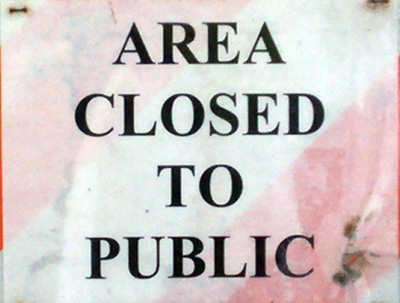 However, some areas like the lodge, cabins and Eco Pond remained closed at the end of 2006.
However, some areas like the lodge, cabins and Eco Pond remained closed at the end of 2006.
Justin Rothwell, 20, like Stanley, has been camping in the Everglades with his family.
“Not only were the hurricanes devastating but every year my dad and brother and I would take a camping trip to the Everglades and stay in the Flamingo cabins and needless to say we didn’t have a camping trip this year.
Anyone from Florida will say that since Hurricane Andrew extra precautions are always taken, it’s just a shame that something wasn’t done to prevent all the damage,” Rothwell said.
Florida homeowners say that boarding up windows and putting up hurricane shutters make a difference. However in the case of the Flamingo area in the Everglades prevention might not have made a difference.
Hurricanes Katrina and Wilma did the most damage while Rita just came and went. The Flamingo area suffered storm surges that flooded nearly all facilities in that area and filled the Florida Bay side of the Flamingo marina with mud. Although most of the areas have reopened some still have not and are beyond normal reparation and need complete reconstruction.
“Since the marina is open we still go there to fish but if we want to camp we have to go to other sites. It’s still a good time but camping at Flamingo was the best. I’m sure a lot of families are missing the camping out there,” Stanley said.
Since last hurricane season reconstruction on the damaged areas in the Everglades has taken place. And, fortunately, there were no threatening storms during the 2006 season.
“The Florida Bay marina was dredged to remove mud that was pushed in by Hurricane Wilma. The marina store has been cleaned, stocked and reopened and the Visitor Center has reopened,” McGee-Ballinger said.
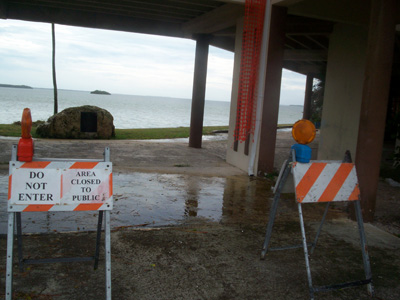 The problem with the restoration process is getting the funding.
The problem with the restoration process is getting the funding.
The Everglades National Park is part of the Department of Interior and all funding if approved through the U.S. Congress.
Unfortunately getting the necessary funding for the Everglades is most likely not first on the legislators’ list considering other issues going on in the nation and the world.
Lucky for all of South Florida this year’s hurricane season was extremely mild but a hurricane season like 2005 can easily happen again.
“We are currently in the public scoping process to determine how to rebuild Flamingo and this is a question that will be addressed,” Mc-Gee-Ballinger said.
Even though camping at Flamingo is out of commission right now the opening of other things like the marina and gift shop still provide things to do but the once full of life area now remains a desolate place.
For a complete and current list of closed areas visit http://www.nps.gov/ever.
| The view of Florida Bay from the Flamingo Visitor Center (Photos by Allison Slutsky) | 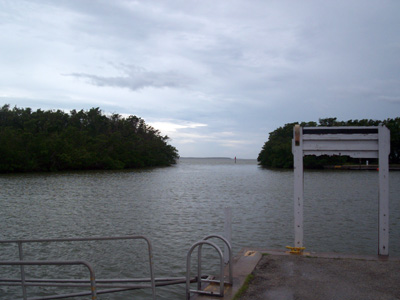 |

Comments are Closed